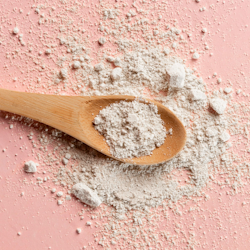LEHVOSS News
- Details
- Written by: Sarah Gates

Could a natural ingredient outperform a well-known solution in oral health? New research demonstrates Pomella® Pomegranate Extract might do just that.
A randomised, controlled study was conducted to further explore Pomella®’s benefits on oral health. Over a 21-day period, 60 adult participants were given a 30% Pomella® mouthrinse, which was compared against 0.12% chlorhexidine (CHX) mouthwash1.
The study concluded that both mouthrinses effectively reduced plaque, gingival inflammation and salivary bacterial counts from the baseline, however it was clearly demonstrated that Pomella® had greater short-term antiplaque effects, with more significant plaque reduction recorded at day 5 and 21, compared to CHX.
- Details
- Written by: Sarah Gates

Golden Omega® is setting a new benchmark for the Omega-3 industry, combining vertical integration, a focus on sustainability, and ongoing innovation. Strategically located in Arica, Chile, at the centre of the South Pacific’s most abundant fishing grounds, Golden Omega® maintains complete oversight of its supply chain. This enables the company to consistently deliver Orivo® Verified fish oil concentrates with up to 750 mg/g of EPA and DHA combined, ensuring both quality and traceability from sea to finished product.
Using innovative processing technology that includes patented selective crystallization and advanced purification methods, Golden Omega® delivers fish oils with exceptionally low contaminants and higher concentrations, suitable for smaller, more convenient capsules or finished products with higher potency.
- Details
- Written by: Sarah Gates

PureSea® Gold Standard Seaweed delivers the essential nutrient Iodine in a natural, traceable form, backed by science and EFSA health claims, all whilst being sustainably sourced. According to science, Iodine is a key nutrient for the thyroid gland, enabling the production of thyroid hormones that help regulate metabolism, energy production and many other body functions.
Deficiencies in iodine could lead to hypothyroidism and other thyroid-related issues1 – resulting in fatigue, low energy and weight management issues. PureSea® provides a safe, natural source of this essential nutrient, with research suggesting that it may also slow glucose release – helping to maintain steady blood sugar levels, reduce spikes and promoting satiety for healthy weight management.
- Details
- Written by: Sarah Gates

At LEHVOSS Nutrition, we’re committed to delivering a carefully curated selection of premium, standard raw materials through our Essentials Range. Download our comprehensive offer here.
This collection features the must-have ingredients, sourced from approved partners to meet the diverse needs of consumers. Our LEHVOSS Nutrition Health Platform offers information on every ingredient within the Essentials range, including research-backed benefits and EFSA Approved Health Claims, to provide you with valuable support throughout your finished product formulation process. The Essentials Range spans a wide variety of categories, including Collagen, Coenzyme Q10, Amino Acids, Sodium Hyaluronate, Vitamins, Botanicals and more.
- Details
- Written by: Sarah Gates

EpiCor® Pets is a researched postbiotic ingredient that helps support immune function and gut health in companion animals. It delivers beneficial metabolites directly to the digestive system, helping maintain a healthy microbiome while balancing T-cell helper responses.
Research in dogs has shown that EpiCor® Pets is safe for routine use and supports key aspects of immune function¹. Studies indicate it promotes a balanced immune response and healthy levels of important immune markers while also having a beneficial effect on microbial ecology².
Bone broths are a growing trend in pet health nutrition, offering an excellent opportunity to incorporate EpiCor® Pets for innovative formulations and added health benefits.
- Details
- Written by: Sarah Gates

New research (2025) shows how Liposomal PureWay-C® Vitamin C may deliver powerful oxidative stress protection, especially when combined with PureWay™ G, an advanced form of Glutathione.
Results from the research1, involving human endothelial cells pre-treated with both ingredients, showed almost complete protection from oxidative damage caused by hydrogen peroxide—significantly outperforming the results seen when either ingredient was used on its own. These findings indicate a synergistic effect, delivering enhanced antioxidant defence and promoting superior cellular viability through a dual-layer mechanism.
PureWay-C® and PureWay™ G are advanced forms of Vitamin C and Glutathione dcreated for superior absorption, antioxidant protection, and cellular support.
- Details
- Written by: Sarah Gates

LEHVOSS Italia will be in the spotlight at In-Vitality, Fiera Milano Rho, on 19 and 20 November 2025: an unmissable event to discover the latest innovations in the Nutrition and Personal Care sectors.
At stand D25, visitors will have the opportunity to learn about the new studies on Benicaros®, PureWay™ Q10, PureWay™ Glutathione, Zooca® Calanus® Oil and Witholytin®, as well as the new PureSea® Protect.
Special initiatives will include the Univestin® “7 day challenge” sample boxes for joint well-being and a presentation by Teresita Rudà, Head of Marketing and Brand Positioning, at Nutrafocus on Thursday, 20 November at 10:50 in Theatre 2, dedicated to Zooca® Calanus® Oil.
It will also be possible to meet our Sales Manager, Alessandro Salvini. This is a unique opportunity to explore LEHVOSS Italia’s solutions and speak directly with our experts. Book an appointment now!
- Details
- Written by: Sarah Gates

Transparency and authenticity in today’s Omega-3 market have become paramount as brand companies increasingly seek ingredients they can trust to support their message to end consumers. Our partners Golden Omega® meets this expectation with the ORIVO certification, providing independent verification that their Omega-3 fish oil concentrates are exclusively from pure South Pacific anchovy. Every batch is genuine and traceable, giving customers confidence that they are purchasing an ingredient with true source and verified origin.
Golden Omega® fish oil concentrates deliver up to 750mg/g of combined EPA and DHA and are produced in a state-of-the-art facility in Arica, Chile, near one of the world’s richest fishing areas. Golden Omega® is vertically integrated from its fisheries, ensuring control of the supply chain from catch to the final product.
- Details
- Written by: Sarah Gates

A new pilot study1 published in September 2025 finds that middle-aged women with obesity and prediabetes—a group often at higher risk for cardiovascular and metabolic disease but less frequently studied—showed improvements in heart function and metabolic balance after taking 4g/day of Zooca® Calanus® Oil for 12 weeks.
Researchers observed a significant improvement in cardiac diastolic function, measured by the E/A ratio, which indicates how efficiently the heart relaxes and fills with blood between beats.
Participants also showed much better TyG-WHtR index scores, a marker of triglycerides, glucose, and body composition, suggesting improved insulin sensitivity and reduced metabolic stress1.
- Details
- Written by: Sarah Gates

Research has demonstrated that OptiMSM® helps with post-exercise pain and inflammation1 and counteracts oxidative stress2, supporting faster recovery after exercise.
Building on these findings, a new 2025 study3 further evaluated OptiMSM® benefits, examining 1g/day of OptiMSM® on immune response gene expression in experienced runners completing a half-marathon.
In the study, participants took either 1g of OptiMSM® or a placebo for 30 days before the race. Blood samples were collected before, and two and four hours after exercise.
Results showed improvements in exercise recovery, and antioxidant support3, highlighting OptiMSM®’s role as a methyl donor and an essential component for cellular health, aiding recovery3,4.



 Could a natural ingredient outperform a well-known solution in oral health?
Could a natural ingredient outperform a well-known solution in oral health?

 At
At 






































